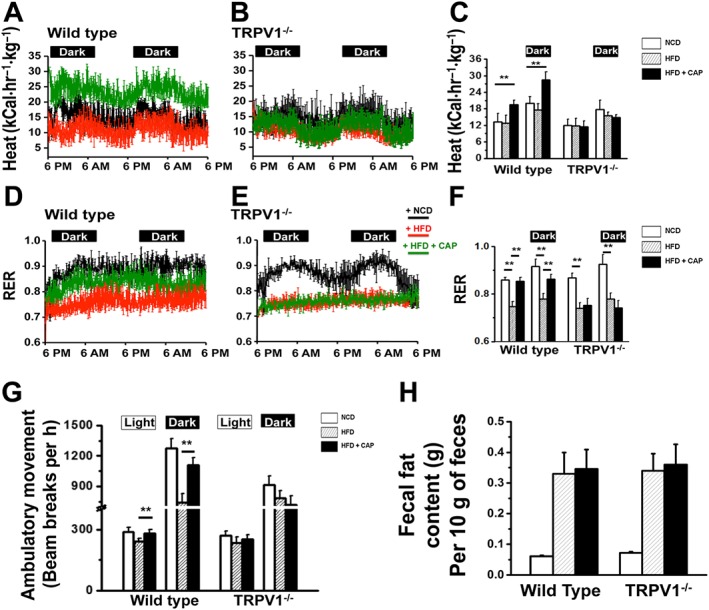Figure 2.

Dietary capsaicin increases metabolic activity. (A) and (B) Representative traces of time course of heat production (in kCal·hr−1·kg−1) during the dark and light cycles in NCD‐fed, HFD‐fed or HFD + CAP‐fed WT and TRPV1−/− mice (n = 40) calculated by using the modified Weir equation [Metabolic rate (heat production) = (3.941 * VO2 + 1.106 * VCO2)/100]. (D) and (E) Representative traces of time course of RER [ratio of carbon dioxide production (VCO2) to oxygen consumption (VO2)] measured by CLAMS, during the dark and light cycles for NCD‐fed, HFD‐fed or HFD + CAP‐fed WT and TRPV1−/− mice. Respiratory quotient (RER) and heat production were calculated from the values of VCO2 and VO2. (C) and (F) Mean ± SEM heat production and RER during the dark and light cycles for NCD‐fed, HFD‐fed or HFD + CAP‐fed WT and TRPV1−/− mice; ** P < 0.05; significantly different as indicated. (G) Beam breaks per hour (means ± SEM) for the same groups of mice during the dark and light cycles. (I) Dietary capsaicin did not alter fat assimilation: bar graphs represent mean fat ± SEM excreted per 10 g of feces. Samples were obtained from NCD‐fed or HFD (± CAP)‐fed WT and TRPV1−/− mice.
